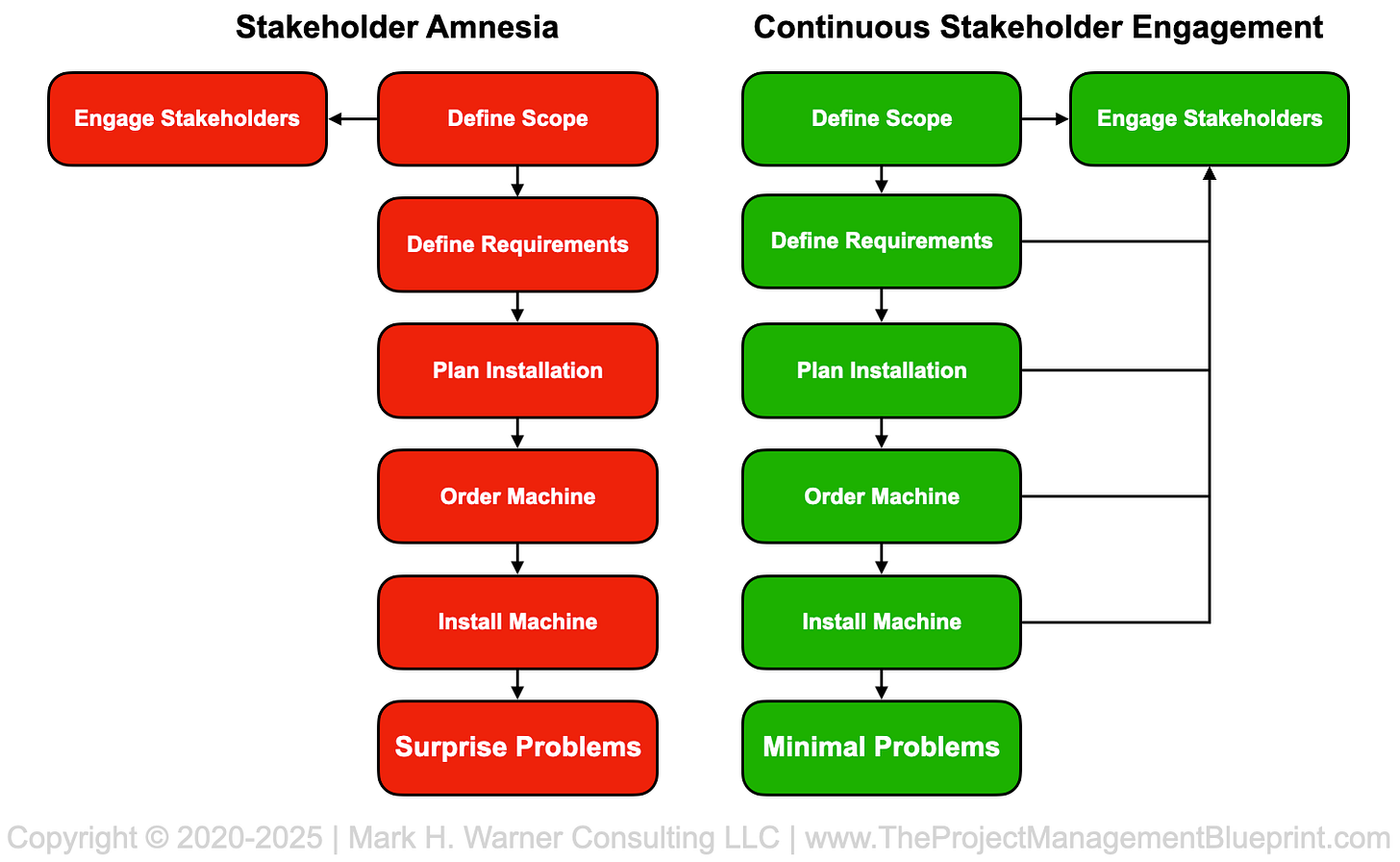Stakeholder Amnesia: The Silent Project Killer
Start with--and never forget--who the project is for...
Imagine a company sets out to install a new CNC machine tool on the factory floor. Your project team moves fast: specs are gathered, procurement is handled, the machine ships, and installers prep the site. On delivery day, the electrician suddenly balks because the power requirements don’t match. And facilities can’t position the unit without special lifting equipment. Operators glance at the new control panel and ask where is the custom safety shield they need. Weeks are lost as workarounds and costly retrofits pile up. A supposedly straightforward upgrade devolves into daily finger-pointing.
This is how projects can derail: stakeholders are initially consulted, but then left out of the conversation and ignored until it is too late. Stakeholder amnesia shows up whenever teams mistake official project approval for genuine consensus, and when “close enough” replaces the hard work of clarifying (and continuously confirming) all user needs, environmental requirements, regulatory hurdles, and operational constraints throughout the life the project. And this nearly always leads to rework and disgruntlement. Said more plainly: unhappy stakeholders.
Getting it right demands more than a kickoff meeting and a handshake. Successful project management calls for identifying all relevant stakeholders, building a living stakeholder register, uncovering their wants and needs, mapping requirements to specifications, and coming back to these stakeholders each time the design or plan evolves—even a little. It requires asking not just “Who’s paying?” but “Who installs, touches, uses, services, and is affected by this machine?” Only then can teams uncover and act on critical needs, and avoid expensive, embarrassing surprises when the hardware shows up.
When stakeholders are engaged both upfront and continuously throughout the project, things move more like clockwork than chaos. The widget fits without last-minute rewiring. Operators see familiar controls, including a custom shield that meets their safety needs. That’s not luck. That’s the discipline of never forgetting who the project is really for.



this hits hard. how do you keep stakeholders engaged in the middle phase when everyone's attention is elsewhere and deadlines aren't looming yet?
So, I want to ask hypothetically, what if the stakeholder isnt serious enough, or is like a problematic circle?